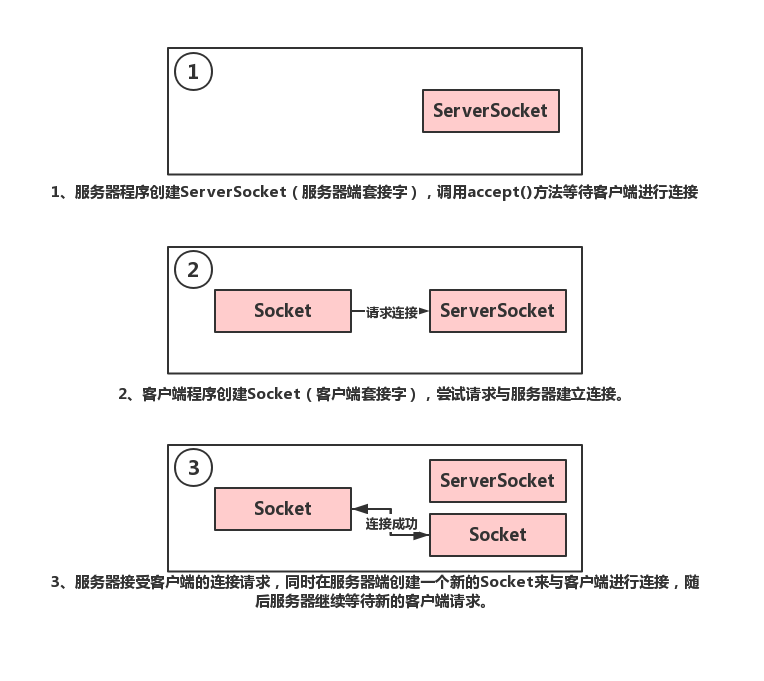Typecho插件實(shí)現(xiàn)添加文章目錄的方法詳解
目錄
- 添加文章標(biāo)題錨點(diǎn)
- 顯示文章目錄
- 添加文章目錄樣式
- 定位到文章
- 定位到目錄
我的長博文不少,比較影響閱讀體驗(yàn),有必要添加一個(gè)文章目錄功能。相比 Wordpress, Typecho 的插件就比較少了。我想找一個(gè)像掘金那樣為文章添加目錄的插件,沒一個(gè)合適的。此類教程也不是很多,而且差不多都是前臺(tái) JavaScript 來實(shí)現(xiàn)的,感覺這樣不如后臺(tái)實(shí)現(xiàn)來的好。
注意:我使用的是Joe主題7.3,其他主題文件路徑可能不一樣。
添加文章標(biāo)題錨點(diǎn)
1.聲明 createAnchor 函數(shù)
在 core/functions.php 中添加如下代碼:
// 添加文章標(biāo)題錨點(diǎn)
function createAnchor($obj) {
global $catalog;
global $catalog_count;
$catalog = array();
$catalog_count = 0;
$obj = preg_replace_callback("/<h([1-4])(.*?)>(.*?)<\/h\1>/i", function($obj) {
global $catalog;
global $catalog_count;
$catalog_count ++;
$catalog[] = array("text" => trim(strip_tags($obj[3])), "depth" => $obj[1], "count" => $catalog_count);
return "<h".$obj[1].$obj[2]." id="cl-".$catalog_count."">".$obj[3]."</h".$obj[1].">";
}, $obj);
return $obj;
}
也可以在標(biāo)題元素內(nèi)添加 <a> 標(biāo)簽,然后該標(biāo)簽新增 id 屬性。
createAnchor 函數(shù)主要是通過正則表達(dá)式替換文章標(biāo)題H1~H4來添加錨點(diǎn),接下來我們需要調(diào)用它。
2.調(diào)用函數(shù)
同樣在 core/core.php 中的 themeInit 方法最后一行之前添加如下代碼:
if ($self->is("single")) {
$self->content = createAnchor($self->content);
}
現(xiàn)在可以查看一下文章詳情頁面的源代碼。文章的 H1~H4 元素應(yīng)該添加了諸如 cl-1、cl-2 之類的 id 屬性值。具體啥名不是關(guān)鍵,好記就行。
顯示文章目錄
1.聲明 getCatalog 函數(shù)
在 core/functions.php 中添加如下代碼:
// 顯示文章目錄
function getCatalog() {
global $catalog;
$str = "";
if ($catalog) {
$str = "<ul>"."\n";
$prev_depth = "";
$to_depth = 0;
foreach($catalog as $catalog_item) {
$catalog_depth = $catalog_item["depth"];
if ($prev_depth) {
if ($catalog_depth == $prev_depth) {
$str .= "</li>"."\n";
} elseif ($catalog_depth > $prev_depth) {
$to_depth++;
$str .= "<ul>"."\n";
} else {
$to_depth2 = ($to_depth > ($prev_depth - $catalog_depth)) ? ($prev_depth - $catalog_depth) : $to_depth;
if ($to_depth2) {
for ($i=0; $i<$to_depth2; $i++) {
$str .= "</li>"."\n"."</ul>"."\n";
$to_depth--;
}
}
$str .= "</li>";
}
}
$str .= "<li><a href="#cl-".$catalog_item["count"]."" rel="external nofollow" title="".$catalog_item["text"]."">".$catalog_item["text"]."</a>";
$prev_depth = $catalog_item["depth"];
}
for ($i=0; $i<=$to_depth; $i++) {
$str .= "</li>"."\n"."</ul>"."\n";
}
$str = "<section>"."\n"."<div>文章目錄</div>"."\n".$str."</section>"."\n";
}
echo $str;
}
getCatalog 方法通過遞歸 $catalog 數(shù)組生成文章目錄,接下來我們需要調(diào)用它。
2.函數(shù)
最好將放在右側(cè)邊欄中。為此在 public/aside.php 中添加如下代碼:
<?php if ($this->is("post")) getCatalog(); ?>
注意:只有文章才使用目錄,獨(dú)立頁面那些不需要,所以加了判斷。Typecho 有一些神奇的 is 語法可以方便二次開發(fā),可以訪問它的官網(wǎng)文檔了解更多。
現(xiàn)在點(diǎn)擊右側(cè)的文章目錄,可以滾動(dòng)到相應(yīng)的文章小標(biāo)題位置了。
添加文章目錄樣式
可以看到,當(dāng)前的文章目錄還比較丑陋,我們來美化一下。在 assets/css/joe.post.min.scss 中添加如下 SCSS 代碼:
.joe_aside {
.toc {
position: sticky;
top: 20px;
width: 250px;
background: var(--background);
border-radius: var(--radius-wrap);
box-shadow: var(--box-shadow);
overflow: hidden;
.title {
display: block;
border-bottom: 1px solid var(--classA);
font-size: 16px;
font-weight: 500;
height: 45px;
line-height: 45px;
text-align: center;
color: var(--theme);
}
.list {
padding-top: 10px;
padding-bottom: 10px;
max-height: calc(100vh - 80px);
overflow: auto;
.link {
display: block;
padding: 8px 16px;
border-left: 4px solid transparent;
color: var(--main);
text-decoration: none;
white-space: nowrap;
overflow: hidden;
text-overflow: ellipsis;
&:hover {
background-color: var(--classC);
}
&.active {
border-left-color: var(--theme);
}
}
}
}
}
為了方便操作,將 .toc 設(shè)置成 position: sticky; 實(shí)現(xiàn)了吸頂定位。考慮到文章目錄可能很多,為 .toc 列表添加了 overflow: auto;,如代碼第 3 ~ 4 行。
由于 .joe_header(主題標(biāo)頭)也使用了吸頂定位,導(dǎo)致和文章目錄有遮擋,所有加了 has_toc .joe_header 來取消頁面主題標(biāo)頭的吸頂功能,如下代碼:
.has_toc {
.joe_header {
position: relative;
}
}
定位到文章
要顯示文章目錄當(dāng)前選中項(xiàng)的狀態(tài),需要用到 JavaScript 給選中項(xiàng)添加一個(gè) active 樣式。在 assets/js/joe.post_page.js 中添加如下代碼:
var headings = $(".joe_detail__article").find("h1, h2, h3, h4");
var links = $(".toc .link");
var tocList = document.querySelector(".tocr > .list");
var itemHeight = $(".toc .item").height();
var distance = tocList.scrollHeight - tocList.clientHeight;
var timer = 0;
// 是否自動(dòng)滾動(dòng)
var autoScrolling = true;
function setItemActive(id) {
links.removeClass("active");
var link = links.filter("[href="#" + id + ""]")
link.addClass("active");
}
function onChange() {
autoScrolling = true;
if (location.hash) {
id = location.hash.substr(1);
var heading = headings.filter("[id="" + id + ""]");
var top = heading.offset().top - 15;
window.scrollTo({ top: top })
setItemActive(id)
}
}
window.addEventListener("hashchange", onChange);
// hash沒有改變時(shí)手動(dòng)調(diào)用一次
onChange();
由于布局和滾動(dòng)動(dòng)畫的影響,導(dǎo)致錨點(diǎn)定位有點(diǎn)偏差。我們?cè)?setItemActive 函數(shù)中用 scrollTo 或 scrollIntoView 來糾正。另外,我們希望有錨點(diǎn)的鏈接可以直接定位,因此監(jiān)聽了 hashchange 事件。點(diǎn)擊文章目錄測試一下定位,再手動(dòng)鍵入錨點(diǎn)測試一下,應(yīng)該都沒啥問題。
定位到目錄
目前可以從文章目錄定位到文章標(biāo)題了,是單向定位,雙向定位還需要實(shí)現(xiàn)滾動(dòng)文章內(nèi)容時(shí)定位到文章目錄的當(dāng)前項(xiàng)。正如我們馬上能想到的,需要監(jiān)聽 window 的 scroll 事件,如下代碼:
function onScroll() {
if (timer) {
clearTimeout(timer);
}
timer = setTimeout(function () {
var top = $(window).scrollTop();
var count = headings.length;
for (var i = 0; i < count; i++) {
var j = i;
// 滾動(dòng)和點(diǎn)擊時(shí) index 相差 1,需要 autoScrolling 來區(qū)分
if (i > 0 && !autoScrolling) {
j = i - 1;
}
var headingTop = $(headings[i]).offset().top;
var listTop = distance * i / count
// 判斷滾動(dòng)條滾動(dòng)距離是否大于當(dāng)前滾動(dòng)項(xiàng)可滾動(dòng)距離
if (headingTop > top) {
var id = $(headings[j]).attr("id");
setItemActive(id);
// 如果目錄列表有滑條,使被選中的下一元素可見
if (listTop > 0) {
// 向上滾動(dòng)
if (listTop < itemHeight) {
listTop -= itemHeight;
} else {
listTop += itemHeight;
}
$(tocList).scrollTop(listTop)
}
break;
} else if (i === count - 1) {
// 特殊處理最后一個(gè)元素
var id = $(headings[i]).attr("id");
setItemActive(id);
if (listTop > 0) {
$(tocList).scrollTop(distance)
}
}
}
autoScrolling = false;
}, 100);
}
$(window).on("scroll", onScroll);
首先,在 onScroll 事件處理函數(shù)中遍歷標(biāo)題數(shù)組 headings, 如果滾動(dòng)條滾動(dòng)距離 top 大于當(dāng)前標(biāo)題項(xiàng) item 可滾動(dòng)距離 headingTop,再調(diào)用 setItemActive 函數(shù),傳入當(dāng)前的標(biāo)題項(xiàng)的 id 來判斷文章目錄激活狀態(tài)。
如果目錄列表有滑條,調(diào)用 jQuery 的 scrollTop 方法滾動(dòng)目錄列表滑條,使被選中目錄項(xiàng)的上下元素可見,
現(xiàn)在文章目錄基本上可用了,也還美觀,后續(xù)可以考慮優(yōu)化再封裝成一個(gè)插件。
吐槽一下:Joe 主題太依賴jQuery了,修改起來費(fèi)勁 ::(汗)。
到此這篇關(guān)于Typecho插件實(shí)現(xiàn)添加文章目錄的方法詳解的文章就介紹到這了,更多相關(guān)Typecho添加文章目錄內(nèi)容請(qǐng)搜索以前的文章或繼續(xù)瀏覽下面的相關(guān)文章希望大家以后多多支持!

 網(wǎng)公網(wǎng)安備
網(wǎng)公網(wǎng)安備